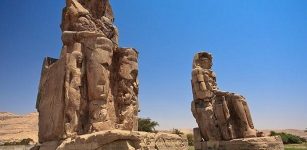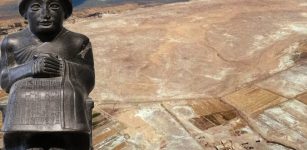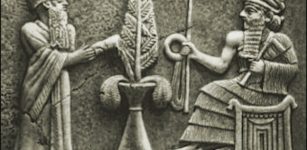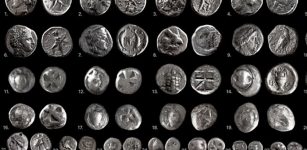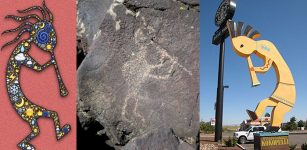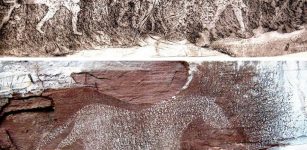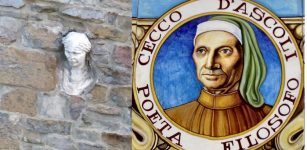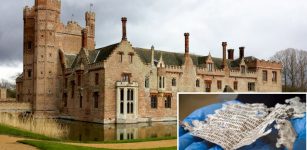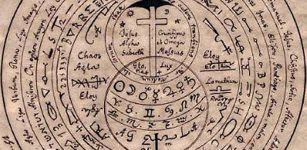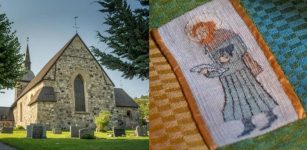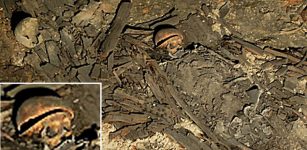Lost Medieval Kingdom Found In West Sussex, UK
Conny Waters - AncientPages.com - The formation of Sussex is a complex historical process that spans several centuries. In 410 AD, following the departure of Roman legions from Britain, the island fragmented into numerous small, competing kingdoms. This period was marked by significant overseas invasions and occupations.
Credit: Adobe Stock - thiraphon
A pivotal moment occurred in 491 AD when Ælle, a legendary Saxon warlord, conquered the ancient fortress of Pevensey. By defeating its British rulers, he established 'Sussex,' which translates to the Kingdom of the South Saxons.
The Saxon invaders introduced pagan beliefs, suppressing the British Christianity established during Roman rule. Historically, it was believed that Sussex remained pagan until the widespread conversion of Saxon kingdoms to Christianity in the 7th century.
Sussex has traditionally been considered the final Anglo-Saxon kingdom to adopt Christianity. According to historical records, Wilfrid, the bishop of Northumbria, played a crucial role in Christianizing Sussex in 681 AD. He is credited with baptizing King Æthelwealh of Sussex and constructing a cathedral in Selsey, where the king resided.
This sequence of events highlights Sussex's gradual transformation from a pagan Saxon territory to a Christian kingdom, illustrating the significant religious and cultural shifts during this period of English history.
Image credit: UCL
Recent research by Dr. Michael Shapland, a historic buildings archaeologist at Archaeology South-East (UCL Institute of Archaeology), challenges the traditional narrative of Sussex's early history. Dr. Shapland's findings suggest that the presumed Kingdom of Sussex was actually composed of at least three distinct kingdoms, roughly corresponding to modern-day East Sussex, West Sussex, and Hastings.
The study highlights significant differences in the origins of these kingdoms, particularly in West Sussex. Interestingly, the region exhibits a scarcity of Saxon archaeological evidence while presenting rare and important 'British' archaeological finds. A notable example is the discovery of a 5th-century A.D. great stone hall at a Roman villa in Marden, north of Chichester, one of only a few such structures known in Britain.
Map of early medieval Sussex. Pevensey can be seen on the right of the image and Selsey on the left. Contour data was provided by Fiona Griffin, and coastline data was provided by Adam Goodfellow. Credit: UCL
Furthermore, Dr. Shapland's research raises questions about the historical accounts of St. Wilfrid's Christianisation of Sussex, which may have been biased. Evidence now suggests the presence of several pre-existing British churches in the region. Additionally, the choice of Selsey as the site for Wilfrid's cathedral, rather than the Roman city of Chichester, appears inconsistent with the typical selection of Anglo-Saxon cathedral locations in other kingdoms.
“There is a gap in the archaeological record for Saxon occupation in West Sussex,” says Dr. Shapland in a press release. “This is not the case east of the River Arun, where evidence of centuries of settlement under Ælle and his successors is plentiful”.
He argues that it is likely that there was already a church on Selsey and that Wilfrid found it easier to lay claim to this existing structure simply. “Selsey was an island, whose form closely resembles the ancient centers of Christianity in the far north and west: Glastonbury, Lindisfarne, and Iona, where the post-Roman kingdoms of Britain had long retained their Christian identity.”
But the clincher for Michael has to be Æthelwealh himself, the last king of Sussex, whose name we now realise quite literally means ‘noble Briton’. “Why was this supposed Saxon king using such a British name? Perhaps it is because he wasn’t a Saxon king at all.”
Church Norton, Selsey. Credit: UCL
The western part of Sussex presents an intriguing historical case, maintaining its status as an independent British Christian kingdom for several centuries after neighboring regions fell under Germanic rule. This persistence is supported by multiple strands of complex evidence.
Wilfrid's efforts to Christianize an already Christian area can be understood in the context of the political dynamics of the time. The Saxon form of Christianity was often employed as a tool for asserting dominance over rival kings. Michael posits that Wilfrid's involvement in Sussex had far-reaching consequences, ultimately contributing to the destabilization of the kingdom. In 685, Æthelwealh, the ruler of Sussex, met his demise in battle against Cædwalla, a West Saxon prince. This event was, to some extent, influenced by Wilfrid's presence and actions in the region.
See also: More Archaeology News
Following these events, Sussex never regained its former independence. Instead, it became a pawn in the power struggles between various kingdoms, reminiscent of the political maneuvering depicted in "Game of Thrones," but set in the context of early medieval Britain.
Today, visitors to Selsey will find no physical remnants of the once-grand cathedral and palace. The structures have long since disappeared, leaving behind only a faint historical echo in the landscape, a subtle reminder of the area's rich and complex past.
Written by Conny Waters – AncientPages.com Staff Writer





